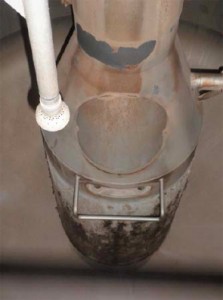
Image Credit: Rochester Midland Corp.
Caustic versus formulated.
The rudiments of the cleaning chemistries are applicable from environmental and kitchen sanitation in the home up to the mega food processing plant. In order to appreciate how specialty sanitation cleaners, clean in place (CIP) or clean out of place (COP) and open plant systems, create value and innovation, a brief review of the principles of cleaning systems/formulas is instructive.
Sanitation Parameters
The acronym “SS TARTEC” stands for eight sanitation parameters.
- Soil: organics verses inorganic types.
- Surface type: mixed metal or plastic, or combination surface that is to be cleaned.
- Time to clean.
- Action: CIP flow rate, fluid psi of fluid, or mechanical action.
- Rinsability: water, volume, and pressure used.
- Temperature parameters.
- Energy: kinetic, thermal, and mechanical.
- Cost: what the current seven parameter procedures established in the sanitation standard operating procedure (SSOP) cost in terms of labor, energy, time, and chemicals.
How you currently conduct the operation and execution of the cleaning parameters (SS TARTEC) is going to let you know what improvements in procedures, equipment, and “specialty” chemistries are required or desired.
Caustic vs. Formulated
The figure at left highlights that straight caustic does not remove as much soil as a formulated cleaner. The example used is a dairy soil with inoculated Lactobacillus spp. typically found in CIP sanitation applications.
Caustic alone leaves 10 percent soil plus microbes, which is too high of an organic load/ bioburden for the sanitizer to overcome. A “formulated” cleaner is like an orchestra with all the components to give a well-rounded sound or cleaning approach. Caustic is your foundation while the chelating agents prevent redeposition of organic-inorganic complexes onto surfaces. The surfactants reduce the surface tension so that you create more efficient cleaner to soil contact. The sequestrants will type up inorganic ions like calcium, magnesium, etc. and work hand in hand with the chelants and the surfactants. If it’s a chlorinated caustic formulation, the hypochlorite is there to attack the protein soil fraction, forming the removal of the proteins in a colloidal suspension. Acid cleaners are also formulated with comparable components to promote enhanced acid cleaning, including enhanced inorganic scale and biofilm removals.

Image Credit: Harpoon Brewery Co., Al Marzi, President of Brewery Operations.
Wort kettle before Rochester Midland Enhance O2.
How Much
Bottom line to the sanitation performance in the plant is: How much chemical, energy, water, and time will your product cost me? Or, how much will it save me? The approach you take with the “specialty” chemistry you trial and employ for a specific sanitation application will only be valid and successful if it saves the end user’s bottom line. Included in the bottom are chemical costs, energy (BTUs), water, and labor/time consumption to create a ROI by providing less chemistry usages, less water, less BTUs, and giving the plant more processing time by shrinking the sanitation time. This has to be all achieved while being as efficient, or more efficient, than older cleaning SSOPs to satisfy food safety regulatory requirements without compromising food
quality parameters like organoleptics, while also increasing product shelf life. As you can see, there is a huge balancing act to maintain.
With all these increased demands and requirements, this is why the classic formulated cleaners have had to evolve into more and more specialized or specialty cleaning technologies. Often it’s not the cost of the actual cleaning chemistry that’s the issue, it’s the other costs of sanitation that are out of line in a program, primarily labor, followed by utilities (energy, water, BTUs), with chemical costs a distant third in the equation.
ACCESS THE FULL VERSION OF THIS ARTICLE
To view this article and gain unlimited access to premium content on the FQ&S website, register for your FREE account. Build your profile and create a personalized experience today! Sign up is easy!
GET STARTED
Already have an account? LOGIN
